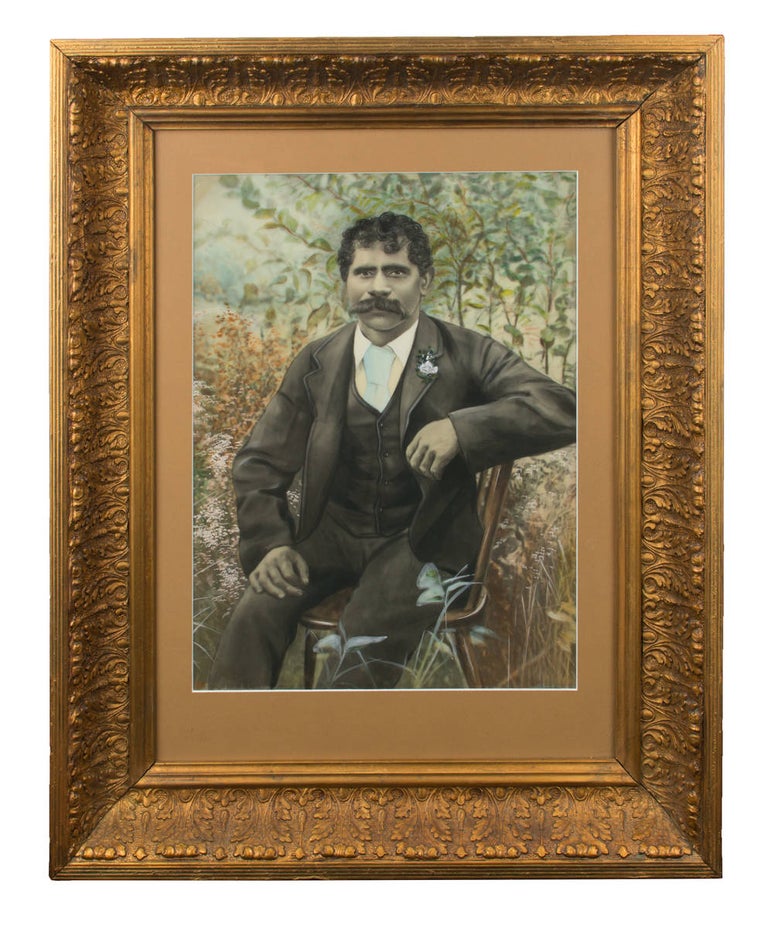
An extremely large hand-painted vintage opalotype (a gelatin silver photograph on opaque white glass) of an Indigenous Australian man on what must surely have been his wedding day
This stunning portrait (visible image size 363 × 260 mm) is behind glass in (possibly) the original ornate gilded plaster and wooden frame (external dimensions 570 × 445 mm); the condition of all aspects of this impressive item is uniformly fine. The photograph has been relatively recently reinserted in the frame, and details written in ink on the verso of the frame include 'c.1890 Aboriginal man, Northern NSW'. We concur with this basic description. The photographer is not credited, and remains unknown to us, but we believe we have identified the subject in five separate photographs taken by the Sydney photographer Henry King. In 1880 King (1855-1923) 'established a photographic studio at 316 George Street in partnership with William Slade and by 1884 was sole proprietor. For the rest of his life he worked from studios in George Street, although much of his reputation was derived from work done outside' ('Australian Dictionary of Biography'). The collection of photographs in the National Library of Australia contains five studio portraits of an Aboriginal man, described as being 'with weapons' or 'with a moustache' (reference numbers 153481206, 153472671, 153473472, 153480486, and 153481425). They are all credited to King; four of them are dated 1885-1894, while one of them (153472671) is dated 'approximately 1889'. On the reasonable assumption that the groom in the wedding portrait is a little older, even a cursory glance at the King images shows a striking resemblance, and we suggest the subject is the same in all cases. However, the image requires little upselling - it stands apart on its own merits, whether or not we can identify the date, place, subject or photographer. When one takes into account that indigenous portraits (especially from the nineteenth century, when the people were treated as subjects, not objects) are scarce, if not rare, this superb item must be rated a singular example. (We have written more about this item; feel free to contact us for further information).
Item #111100
Sold
